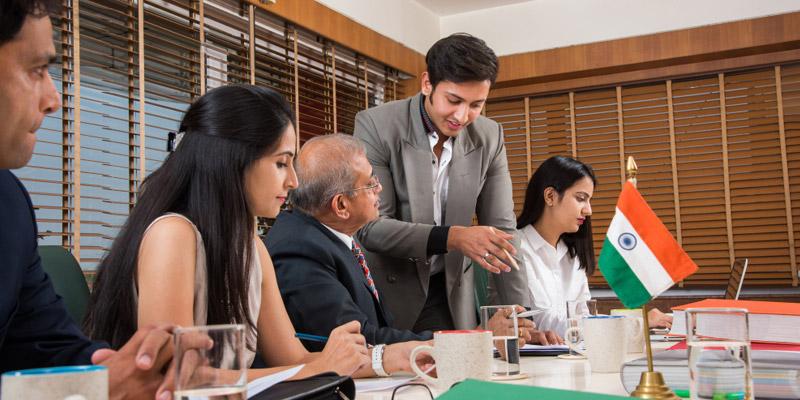Women’s education has been a topic of concern in India for many years. It is essential to empower women with education as it helps them make informed decisions and provides them with opportunities for better livelihoods. The Indian government has undertaken several initiatives to promote women’s education across the country.
In this article, we will discuss some of the significant government initiatives for promoting women’s education in India, including government schemes for women education and rural education.
Importance of Women's Education
Women’s education plays a crucial role in the development of a country. Educated women can contribute to the economic growth of the country as they have better access to job opportunities. They can also help in reducing poverty as they are more likely to participate in the workforce. Educated women are more likely to have better health outcomes, and they can make informed decisions about their health and the health of their families. Furthermore, educated women are more likely to have smaller families, leading to a decline in the population growth rate.
Government Initiatives for Promoting Women's Education In India

The Indian government has launched several initiatives to promote women’s education across the country.
Here are some of the significant government initiatives for promoting women’s education in India:
Beti Bachao, Beti Padhao Scheme
The Beti Bachao, Beti Padhao scheme was launched in 2015 with the aim of addressing the declining child sex ratio and promoting the education of the girl child. The scheme aims to change the mindset of the people towards the girl child and promote gender equality. The scheme focuses on improving the enrolment of the girl child in schools and increasing the retention rate of the girl child in schools.
Pradhan Mantri Matru Vandana Yojana
The Pradhan Mantri Matru Vandana Yojana was launched in 2017 with the aim of providing financial assistance to pregnant and lactating women for their nutrition and healthcare needs. Under this scheme, a cash incentive of Rs. 5,000 is provided to eligible women. The scheme also promotes the education of the girl child as the cash incentive is given in three instalments, and one of the conditions is that the child should be enrolled in school.
Sarva Shiksha Abhiyan
The Sarva Shiksha Abhiyan is a flagship programme of the government of India that aims to provide elementary education to all children between the ages of 6 and 14. The programme also focuses on the education of the girl child and aims to bridge the gender gap in education. The programme provides for the construction of schools, the appointment of teachers and the provision of teaching aids and learning materials. The Sarva Shiksha Abhiyan has been successful in increasing enrolment rates and improving the quality of education in rural areas.
Kasturba Gandhi Balika Vidyalaya Scheme
The Kasturba Gandhi Balika Vidyalaya Scheme was launched in 2004 to provide education to girls from disadvantaged communities. The scheme aims to improve the enrolment and retention of the girl child in schools. The scheme sets up residential schools for girls from economically and socially marginalized communities.
Rashtriya Madhyamik Shiksha Abhiyan
National Scheme of Incentives to Girls for Secondary Education
Support to Tribal Girls for Education
The Support to Tribal Girls for Education scheme was launched in 2008 to provide education to tribal girls. The scheme aims to improve the enrolment and retention of tribal girls in schools. The scheme sets up residential schools for tribal girls and provides scholarships to eligible girls.
Udaan Scheme
The Udaan scheme was launched in 2013 to provide skill development training to girls from economically weaker sections of society. The scheme aims to provide employment opportunities to girls by enhancing their skills. The scheme also focuses on the education of the girl child by providing scholarships to eligible girls.
Government Schemes for Women's Education

Apart from the above initiatives, the Indian government has also launched several schemes specifically aimed at promoting women’s education.
Here are some of the major government schemes for women education:
Mahila Samakhya Programme
The Mahila Samakhya Programme was launched in 1989 to empower women through education. The programme aims to improve the social and economic status of women by providing education and training. The programme focuses on women from disadvantaged communities and aims to provide them with opportunities for better livelihoods.
Saakshar Bharat Programme
In 2009, the government launched the Saakshar Bharat Programme to promote literacy among women. The programme aims to reduce the gender gap in literacy and increase the enrolment of women in schools. The programme provides basic literacy and numeracy skills to women from disadvantaged communities.
Rashtriya Mahila Kosh
The Rashtriya Mahila Kosh was set up in 1993 to provide micro-credit to women from disadvantaged communities. The scheme aims to promote women’s entrepreneurship and provide them with access to credit. The scheme provides loans to women for income-generating activities, including education.
Government Schemes for Rural Education

The Indian government has launched several schemes aimed at promoting education in rural areas. Here are some of the significant government schemes for rural education:
Pradhan Mantri Gramin Digital Saksharta Abhiyan (PMGDISHA)
In 2017, the government launched the Pradhan Mantri Gramin Digital Saksharta Abhiyan to promote digital literacy in rural areas. The scheme aims to make one member of each rural household digitally literate. The scheme focuses on women’s education and aims to promote the enrolment of the girl child in schools.
Rashtriya Krishi Vikas Yojana (RKVY)
The Rashtriya Krishi Vikas Yojana is a government initiative promoting agriculture and rural development. The scheme aims to improve the productivity and income of farmers in rural areas. The scheme also aims to improve the infrastructure and facilities in rural areas, including schools and education.
Sarva Shiksha Abhiyan (SSA)
The Sarva Shiksha Abhiyan was launched in 2001 to provide universal elementary education to all children in the age group of 6-14 years. The scheme focuses on improving the quality of education and increasing the enrolment of children in schools. The scheme also aims to bridge the gender gap in education and improve the education of the girl child.
National Rural Education Mission (NREM)
The government launched the National Rural Education Mission in 2009 to improve the quality of education in rural areas. The scheme aims to provide access to quality education to children in rural areas and increase the enrolment of children in schools. The scheme focuses on the education of the girl child and aims to reduce the gender gap in education.
Conclusion
The Indian government has launched several initiatives and schemes aimed at promoting education in India, especially for women and rural communities. These schemes provide financial assistance, skill development programmes, and scholarships to women, with a focus on empowering them by providing equal opportunities for education and employment. By ensuring that women have access to quality education, the government is not only promoting gender equality but also contributing to the socio-economic development of the country.
Frequently asked questions
The government aims to provide education to girls from disadvantaged communities through the Kasturba Gandhi Balika Vidyalaya Scheme.
The government designed the National Scheme of Incentives to Girls for Secondary Education to encourage the enrolment of the girl child in secondary schools.
Yes, these government education schemes are accessible to women in both rural and urban areas. Specific schemes like Kasturba Gandhi Balika Vidyalaya Scheme focus on providing education to girls in rural areas. The government also supports the construction of schools and the provision of teaching aids in rural areas to improve education quality.
The Rashtriya Mahila Kosh is a government scheme providing micro-credit to women from disadvantaged communities.
